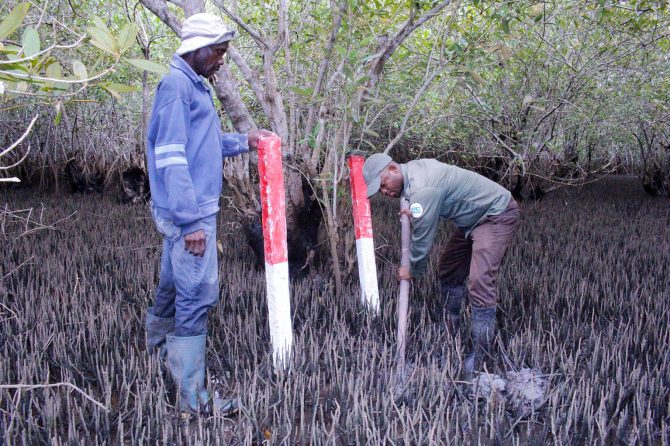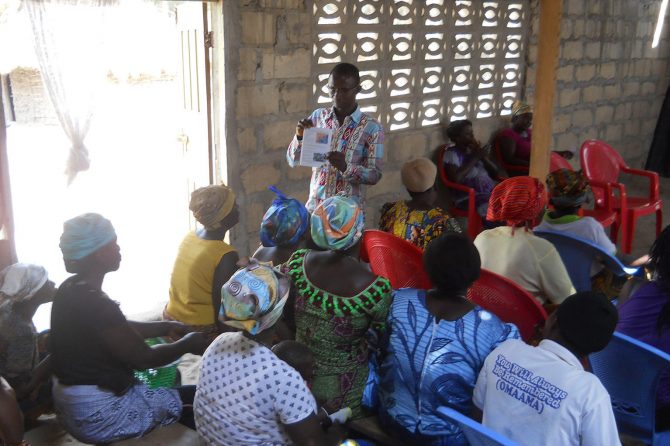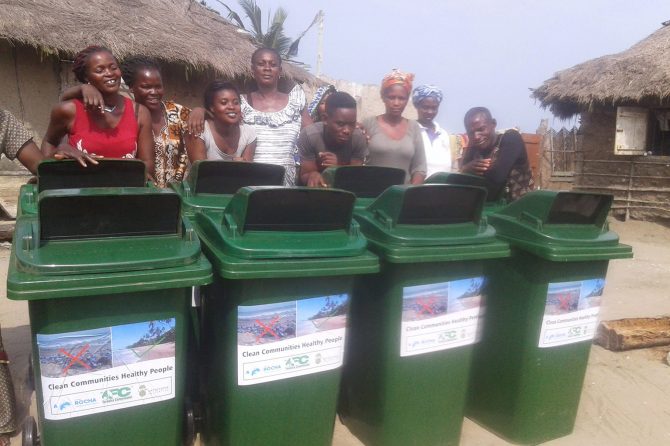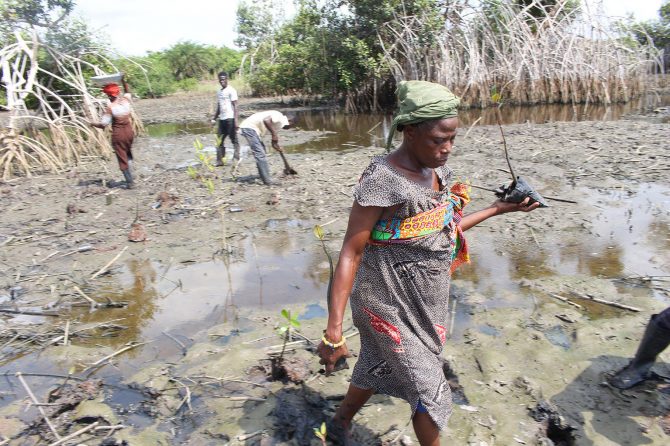2016 GHANA
Mangrove restoration to improve socioecological production landscapes and seascapes for fisheries recovery at the MuniPomadze Ramsar Site
A Rocha Ghana
Community / field-based implementation
Landscape, Seascape
Overview
The fisheries sector of Ghana plays an important role in contributing significantly to national economic development objectives related to employment, livelihood support, poverty reduction, food security, foreign exchange earnings and resource sustainability. The Effutu Municipality is one of the vibrant fishing hubs in the Central region of Ghana. However, prior to the project, areas such as advocating for sustainable fisheries management practices and securing fish spawning habitats had received minimal attention. This project aimed to empower coastal communities within the Effutu Area to sustainably manage their own marine resources, resulting in productive and profitable fisheries, coastal ecosystem conservation and resilience. The specific objectives of the project were to undertake: (i) behaviour change communication on sustainable coastal resource management for improving the current state of degraded SEPLS; and (ii) initiate actions to enhance sustainable coastal resource management, such as habitat restoration of five hectares of degraded mangrove areas and the demarcation of a community fisheries recovery zone.
Key achievements
- The most important achievement was the demarcation of the fisheries recovery zone, which was led by community members. Community members now have clearly demarcated core and buffer zones, which will support the recovery of fish for sustainable livelihoods. This also serves as a learning point based on a readiness plan for future designation as a marine protected area.
- Through awareness raising and engagement of the community in the project, community members are now aware of the issues related to coastal resource management and are able to link them with their livelihoods. Initiatives such as the demarcation of the core and buffer zones within the mangrove areas to serve as spawning sites for fish demonstrates positive behaviour change in the community, whose members now support the conservation of their coastal resources.
- 6,000 red mangrove seedling were nursed and planted over a 5ha degraded mangrove area. The planting of the degraded area has improved the vegetation of the site and mangroves are growing well.
- A community fisheries recovery zone has been demarcated. A core zone encompassing the lagoon was demarcated with red pillars and the buffer zone demarcated with blue pillars. The pillars were erected 50m from the buffer zone and 100m from the lagoon shore covering 12,000 m2.
- 15 community volunteer groups were recruited to support monitoring of both project activities and any illegalities that might be going on at the site.
- In addition, the community designated a community waste dumping site and assigned volunteers to monitor and ensure the waste is collected and dumped only at the designated site.
Lessons
- One key lesson from the project is the need to provide room for collaboration with other projects. There was another project on-going in the area of the SDM project. Collaboration was established by the two projects and, as a result, a total of three communities gained support for activities such as demarcation of a fisheries recovery zone. The existing working relation between the main collaborator and these communities made it easier for the SDM project to get community support to ensure that the project achieved its desired results.
- Another lesson was that it is always prudent to raise additional funds to support the initiated activities so the project can achieve sufficient scale for even larger impact and lasting outcomes.
- A third lesson is the importance of seeking to secure a concrete commitment from collaborating partners, possibly in the form of a Memorandum of Understanding, to ensure that collaborating partners continue to support the project during its entire implementation. For instance, in this case, the Municipal Assembly agreed to support waste collection but during implementation could not fulfil the agreement due to inadequate funds.
Project location
Organisation
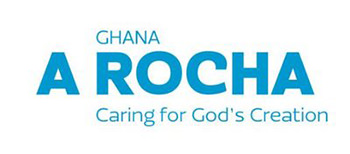
A Rocha Ghana
- Sector
- Non-governmental organisation
- Country
- Ghana
- Website/SNS
- https://ghana.arocha.org/
Relevant projects
Projects of the same year
Aichi Biodiversity Targets
Aichi Biodiversity Targets
-
Awareness increased
-
Sustainable production and consumption
-
Habitat loss halved or reduced
-
Sustainable management of marine living resources
-
Sustainable agriculture, aquaculture and forestry
-
Pollution reduced
-
Protected areas increased and improved
-
Ecosystems and essential services safeguarded
-
Ecosystems restored and resilience enhanced
Sustainable Development Goals
Sustainable Development Goals
-
No poverty
-
Zero hunger
-
Life below water
-
Life on land
